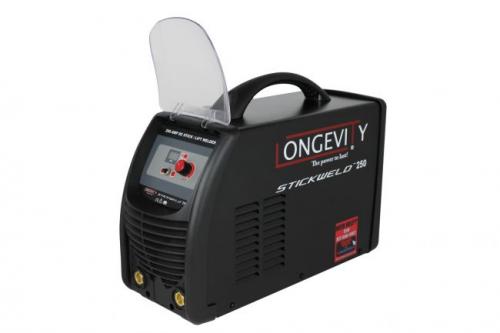5 Useful Stick Welding Tips for Beginners

Stick welding is one of the most common forms of arc welding and it is a difficult process to learn. One needs to possess a high skill level and mastery of certain techniques to be an effective stick welder.
Here are some important tips that will help a beginner in doing stick welding in a successful way:
Current setting
The type of electrode you choose determines the type of current the machine wants, whether it is DC Positive, DC Negative or AC. Don’t forget to use the correct setting for your specific type. Electrode positive offers more penetration, while electrode negative provides better results for thinner metals. Choose your amperage based on the electrode, welding position, and visual inspection of the finished weld. For ideal amperage setting, follow the manufacturer’s recommendations.
Length of arc
It is crucial to have the correct length of the arc for stick welding. The correct arc length varies with each electrode and application. The arc length should not exceed the diameter of the metal portion (core) of the electrode. For example: a 1/8 inch 6010 electrode is held about 1/8 inch off the base material. When the electrode is held too closely, it decreases the welding voltage. An excessive long arc creates spatter, undercuts, low depression rates and porosity.
Most of the beginners weld with too long of an arc, to get a better view of the arc and puddle, and that creates rough beads with lots of spatter. With little practice, you’ll realize that a controlled arc improves bead appearance, creates a narrower bead and minimizes spatter.
Angle of travel
Stick welding uses a ‘drag’ or ‘backhand’ technique for welding in a flat, horizontal and overhead positions. Hold the rod perpendicular to the weld joint. Tilt the top of the electrode approximately 5 to 15 degrees in the direction of travel. For welding vertically up, a ‘push’ or ‘forehand’ technique is used. Tilt the top of the rod away from the travel of direction at 15 degrees.
Manipulation of electrode
Each welder manipulates the electrode in a different way. Create your own style by observing other stick welder, practicing and noting the methods that must be used for the best results. Note that on a material 1/4 inch and thinner, weaving the electrode is not needed as it will create a bead that is wider than necessary. In most of the cases, straight bead works fine.
For creating wider bead on thicker materials, manipulate the electrode from side-to-side, creating a continuous series of partially overlapping circles in a Z shaped, semi-circle or stutter-step pattern. Limit side to side motion to two times the diameter of the electrode core. To cover a wider area, make multiple passes or stringer beads.
While welding vertically up, concentrate on welding the sides of the joint. Move slowly across the middle of the joint, so that the weld puddle can catch up and pause slightly to ensure the solid tie-in to the sidewall.
Speed of travel
A weld bead with the desired contour, width and appearance is produced with the proper travel speed. Adjust the travel speed that allows you to keep the arc in the leading one-third of the weld pool.
These tips, combined with practice and patience, will get you headed in the right direction to improve your stick welding technique. You can buy Longevity stick welder, an ideal welding unit for welding professionals. It is super portable, efficient and easy to use.
Advertise on APSense
This advertising space is available.
Post Your Ad Here
Post Your Ad Here
Comments